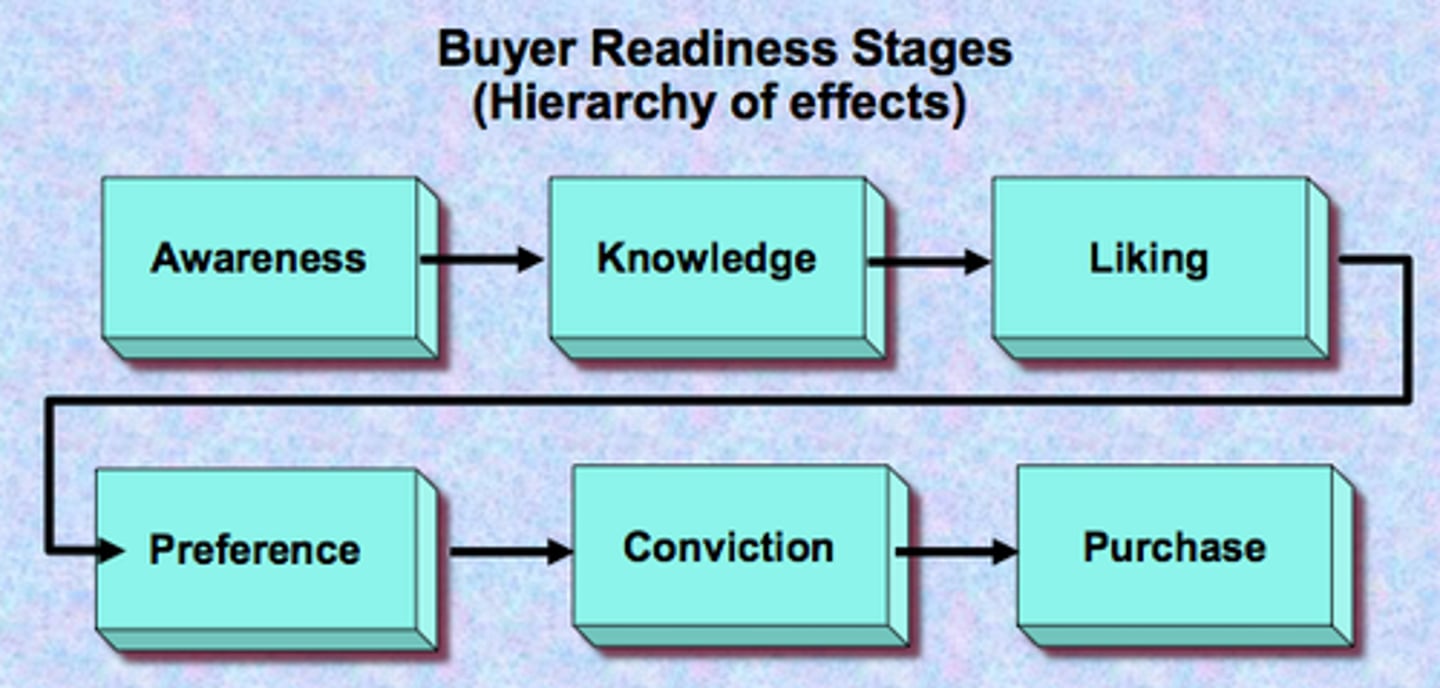Chapter 14: Engaging Customers and Communicating Customer Value
1/18
There's no tags or description
Looks like no tags are added yet.
Name | Mastery | Learn | Test | Matching | Spaced |
|---|
No study sessions yet.
19 Terms
promotion mix (marketing communications mix)
The specific blend of promotion tools that the company uses to persuasively communicate customer value and build customer relationships.
advertising
Any paid form of nonpersonal presentation and promotion of ideas, goods, or services by an identifies sponsor.
sales promotion
Short-term incentives to encourage the purchase or sale of a product or a service.
personal selling
Personal presentation by the firm's sales force for the purpose of engaging customers, making sales, and building customer relationships.
public relations (PR)
Building good relations with the company's various publics by obtaining favorable publicity, building up a good corporate image, and handling or heading off unfavorable rumors, stories, and events.
direct and digital marketing
Engaging directly with carefully targeted individual consumers and customer communities to both obtain an immediate response and build lasting customer relationships.
content marketing
Creating, inspiring, and sharing brand messages and conversations with and among consumers across a fluid mix of paid, owned, earned, and shared channels.
integrated marketing communications (IMC)
Carefully integrating and coordinating the company's many communications channels to deliver a clear, consistent, and compelling message about the organization and its products.
buyer-readiness stages
The stages consumers normally pass through on their way to a purchase: awareness, knowledge, liking, preference, conviction, and, finally, the actual purchase.

personal communication channels
Channels through which two or more people communicate directly with each other, including face to face, on the phone, via mail or e-mail, or even through an internet "chat".
word-of-mouth influence
Personal communications about a product between target buyers and neighbors, friends, family members, and associates.
buzz marketing
Cultivating opinion leaders and getting them to spread information about a product or a service to others in their communities.
nonpersonal communication channels
Media that carry messages without personal contact or feedback, including major media, atmospheres, and events.
affordable method
Setting the promotion budget at a level management thinks the company can afford.
percentage-of-sales method
Setting the promotion budget at a certain percentage of current or forecasted sales or as a percentage of the unit sales price.
competitive-parity method
Setting the promotion budge to match competitors' outlays.
objective-and-task method
Developing the promotion budget by (1) defining specific promotion objectives, (2) determining the tasks needed to achieve these objectives, and (3) estimating the costs of performing these tasks. The sum of these costs is the proposed promotion budget.
push strategy
A promotion strategy that calls for using the sales force and trade promotion to push the product through channels. The producer promotes the product to channel members who in turn promote it to final consumers.
pull strategy
A promotion strategy that calls for spending a lot on consumer advertising and promotion to induce final consumers to buy the product, creating a demand vacuum that "pulls" the product through the channel.